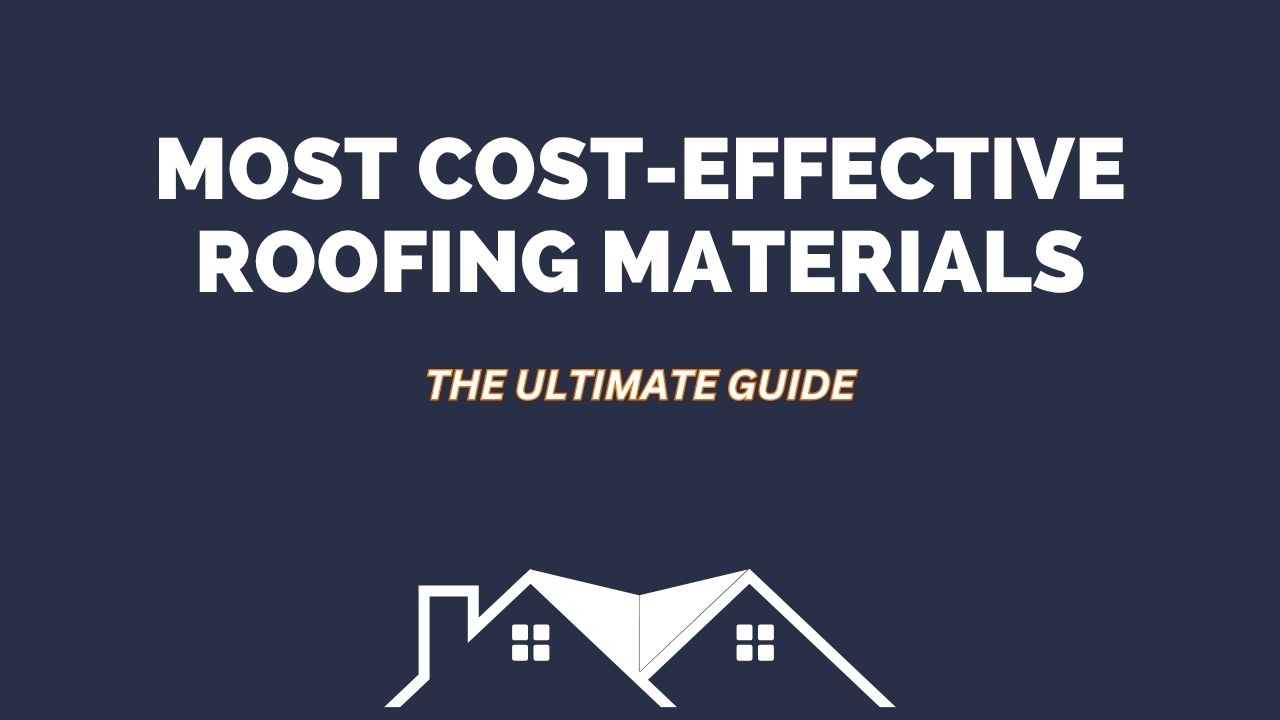What Are the Most Cost-Effective Roofing Materials?


When it’s time to replace or build a new roof, cost is usually one of the biggest concerns for homeowners. The good news is, there are plenty of roofing materials that balance affordability, durability, and appearance. In this post, we’ll look at some of the most cost-effective roofing options and what makes them worth considering.
1. Asphalt Shingles – The Budget-Friendly Classic
Asphalt shingles are the most common and affordable roofing material in the U.S. and U.K. They’re easy to install, available in many colors, and work well for most climates.
- Average cost: $1 to $3 per square foot (materials only)
- Lifespan: 15–30 years
- Pros: Low cost, easy to replace, widely available
- Cons: Shorter lifespan compared to premium materials
If you’re looking for a cost-effective, no-fuss roofing solution, asphalt shingles are often the best starting point.
2. Metal Roofing – Long-Term Value
At first glance, metal roofs might seem expensive, but they’re actually cost-effective in the long run. They last decades longer than asphalt and require little maintenance.
- Average cost: $3 to $6 per square foot
- Lifespan: 40–70 years
- Pros: Very durable, energy-efficient, recyclable
- Cons: Higher upfront cost, can be noisy during rain
Metal roofing is great for homeowners who plan to stay in their home long-term and want a strong, low-maintenance roof.
3. Rolled Roofing – For Small or Flat Roofs
If you have a shed, garage, or low-slope roof, rolled roofing is one of the cheapest options out there. It’s made from the same material as asphalt shingles but comes in large rolls for quick installation.
- Average cost: $1 to $2 per square foot
- Lifespan: 5–10 years
- Pros: Very affordable, fast to install
- Cons: Not suitable for steep roofs, short lifespan
Rolled roofing isn’t ideal for houses but works perfectly for smaller structures or temporary solutions.
4. Corrugated Roofing Sheets – Lightweight and Durable
Corrugated metal or bitumen sheets are another budget-friendly choice, especially for outbuildings, workshops, or rural homes. They’re lightweight, durable, and easy to handle.
- Average cost: $1.50 to $3 per square foot
- Lifespan: 20–40 years
- Pros: Strong, weather-resistant, low maintenance
- Cons: Industrial look may not suit all homes
They’re a great mix of low cost and high durability—especially in areas with heavy rain or snow.
5. Composite (Synthetic) Shingles – Affordable and Stylish
Composite shingles mimic the look of wood, slate, or tile but at a lower price. Made from recycled materials, they’re eco-friendly and often lighter than traditional options.
- Average cost: $4 to $6 per square foot
- Lifespan: 30–50 years
- Pros: Attractive, durable, resistant to mold and UV damage
- Cons: Costs more than asphalt shingles
Composite shingles are perfect if you want a stylish look without spending a fortune on natural materials.
6. Clay or Concrete Tiles – Pricier but Long-Lasting
While clay and concrete tiles cost more upfront, they’re incredibly durable and can last over 50 years with minimal care. In warm, dry regions, they’re a cost-effective investment over time.
- Average cost: $5 to $10 per square foot
- Lifespan: 50–100 years
- Pros: Long lifespan, excellent insulation, beautiful look
- Cons: Heavy, higher installation cost
They’re not the cheapest option, but if you value longevity and a classic appearance, they can be worth every penny.
7. Green Roofs and Solar Shingles – The Modern Choice
If you’re eco-conscious, green roofs (with plants) and solar shingles can be cost-effective in a different way—they can save you money on energy bills and reduce your carbon footprint.
- Average cost: $10 to $20 per square foot
- Lifespan: 25–40 years
- Pros: Energy savings, eco-friendly
- Cons: High upfront cost, complex installation
These options are best for those who think long-term and want to combine sustainability with energy efficiency.
Final Thoughts
The “most cost-effective” roofing material really depends on your budget, home type, and how long you plan to stay.
- For short-term affordability, go with asphalt shingles or rolled roofing.
- For long-term savings, metal or composite shingles are excellent choices.
- If you want beauty and durability, tiles or solar roofs might be worth the investment.
Whatever you choose, remember that proper installation and maintenance are just as important as the material itself when it comes to saving money in the long run.
Quick Summary
| Roofing Material | Average Cost (per sq. ft.) | Lifespan | Best For |
|---|---|---|---|
| Asphalt Shingles | $1–3 | 15–30 years | Budget-friendly homes |
| Metal Roofing | $3–6 | 40–70 years | Long-term savings |
| Rolled Roofing | $1–2 | 5–10 years | Sheds, garages |
| Corrugated Sheets | $1.5–3 | 20–40 years | Workshops, rural homes |
| Composite Shingles | $4–6 | 30–50 years | Style + affordability |
| Clay/Concrete Tiles | $5–10 | 50–100 years | Warm climates |
| Solar/Green Roofs | $10–20 | 25–40 years | Eco-friendly homes |
FAQs
1. What is the cheapest roofing material?
The most affordable roofing material is asphalt shingles. They’re easy to install, widely available, and cost only about $1 to $3 per square foot.
2. Which roofing material lasts the longest?
Metal roofing and clay or concrete tiles have the longest lifespan—often lasting 50 years or more with proper maintenance.
3. Are metal roofs worth the extra cost?
Yes. While metal roofs cost more upfront, they last much longer and require less maintenance, making them cost-effective in the long run.
4. What is the best roofing material for hot climates?
Clay tiles and metal roofs are great for hot areas because they reflect sunlight and help keep your home cooler.
5. How can I save money on a new roof?
To save money, choose a durable but affordable material like asphalt or metal, get multiple contractor quotes, and schedule installation during the off-season when prices may be lower.